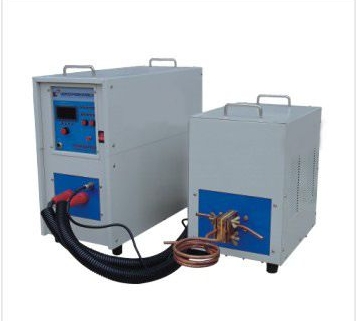- 26
- Nov
What are the principles of high-frequency hardening machines?
What are the principles of high-frequency hardening machines?
(1) Basic principles
Place the workpiece in an inductor wound with a hollow copper tube. After passing in medium frequency or high frequency alternating current, an induced current of the same frequency is formed on the surface of the workpiece, and the surface or part of the part is rapidly heated (the temperature can be increased within a few seconds) 800~1000℃, the core is still close to room temperature) After a few seconds, spray (immersion) water cooling (or spray immersion oil cooling) quickly and immediately complete the immersion work, so that the surface or part of the workpiece can meet the corresponding hardness requirements.
(2) Selection of heating frequency
At room temperature, the relationship between the depth δ (mm) of the induced current flowing into the surface of the workpiece and the current frequency f (HZ) is that the frequency increases, the current penetration depth decreases, and the hardening layer decreases.
Commonly used current frequencies are:
1. High frequency heating: 100~500KHZ, commonly used 200~300KHZ, it is electronic tube type high frequency heating, the hardening layer depth is 0.5~2.5mm, suitable for small and medium-sized parts.
2. Intermediate frequency heating: The current frequency is 500~10000HZ, usually 2500~8000HZ, the power supply equipment is a mechanical intermediate frequency heating device or a silicon controlled intermediate frequency generator. The depth of the hardened layer is 2~10 mm. Suitable for large diameter shafts, medium and large gears, etc. 3. Power frequency heating: The current frequency is 50HZ. Using mechanical power frequency heating power equipment, the depth of the hardened layer can reach 10-20mm, which is suitable for surface quenching of large-diameter workpieces.

